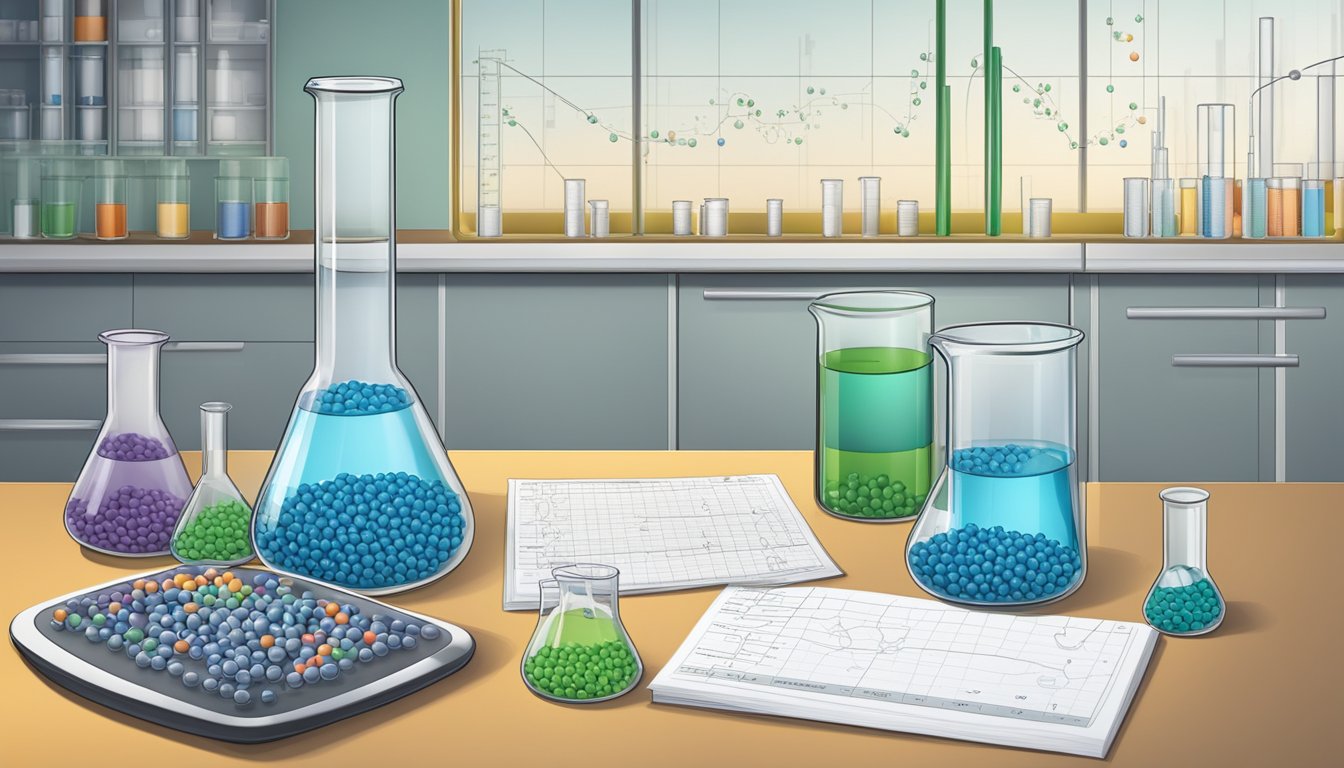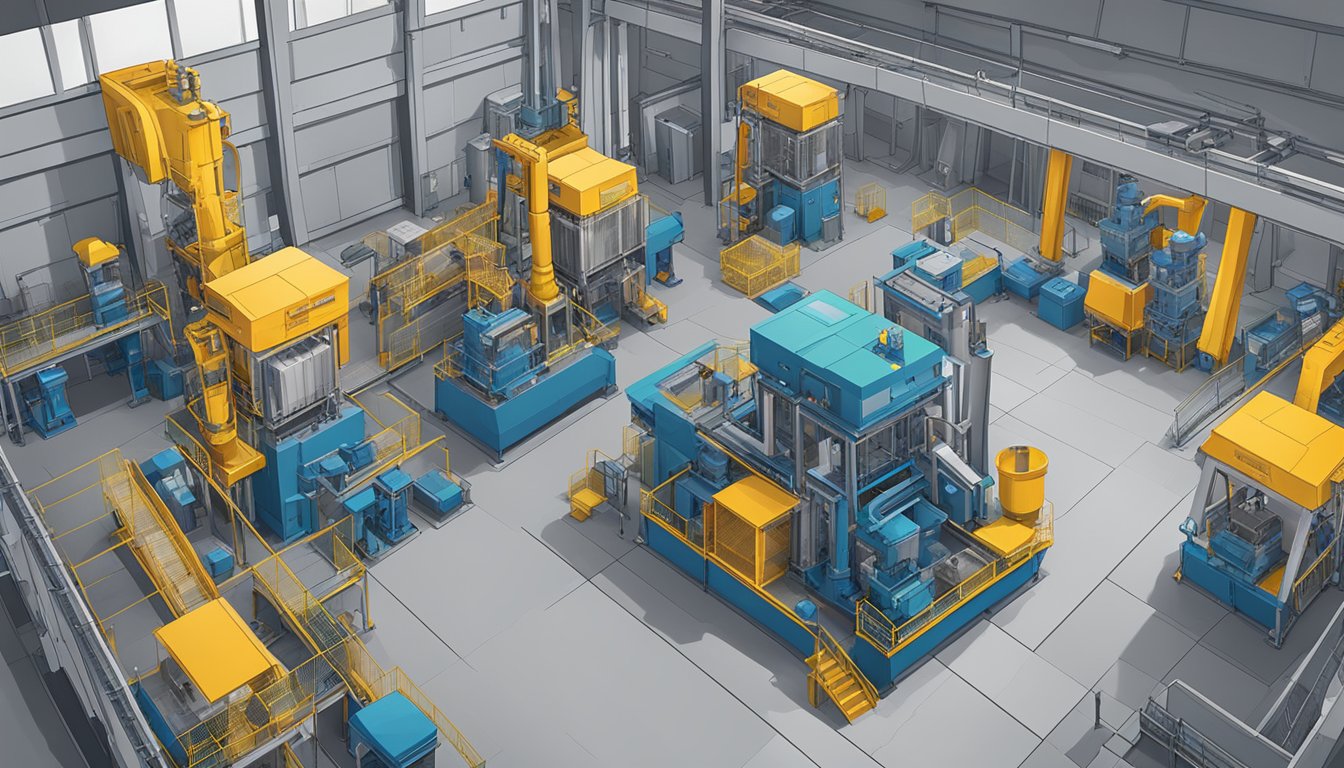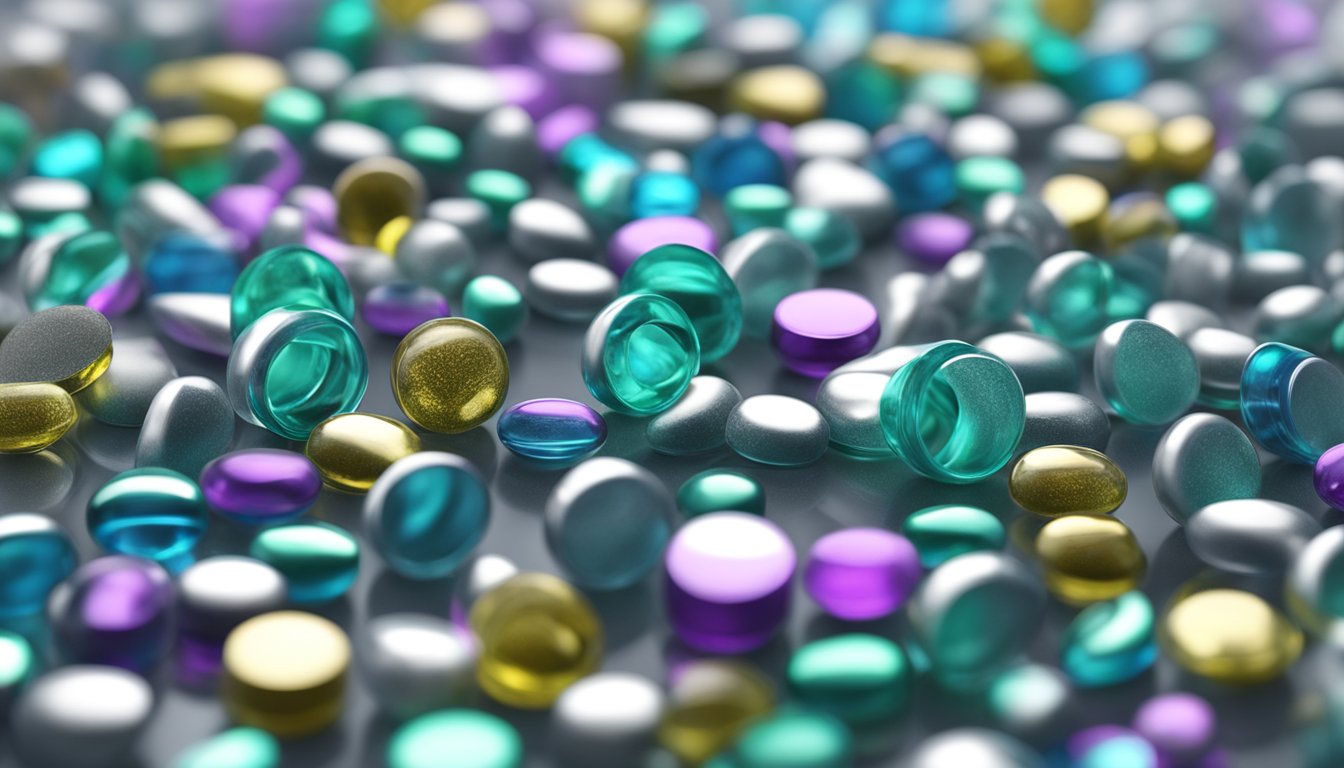GPPS General Purpose Polystyrene: Properties and Applications
19/01/2024
General Purpose Polystyrene (GPPS) is a versatile and cost-effective thermoplastic that is widely used in various industries. It is a clear, hard, and brittle polymer that is made from styrene monomer. GPPS is known for its excellent transparency, high stiffness, and superior moldability, making it ideal for a wide range of applications.

One of the unique qualities of GPPS is its exceptional clarity and attractive light-transmission properties. This makes it an excellent choice for applications where transparency is essential, such as in the packaging industry. Additionally, GPPS provides chemical resistance, making it suitable for use in harsh environments. Its ease of processing, including injection molding, extrusion, and foam molding, makes it a popular choice for manufacturers.
Overall, GPPS is a reliable and cost-effective material that has a wide range of applications. Its unique combination of properties makes it an excellent choice for various industries, including packaging, construction, and automotive. If you are looking for a versatile and reliable material that can meet your specific needs, GPPS may be the right choice for you.
Chemical Composition of GPPS

General Purpose Polystyrene (GPPS) is a thermoplastic polymer that is made from styrene monomer. The chemical formula of styrene is C8H8, and it is a colorless liquid that has a sweet odor. Styrene is produced by the dehydrogenation of ethylbenzene, which is obtained from crude oil.
GPPS is produced by polymerizing styrene monomer using a free radical initiator. The polymerization reaction is typically carried out in an aqueous suspension or emulsion, and the resulting polymer beads are then washed, dried, and packaged. The chemical structure of GPPS consists of a linear chain of styrene monomer units that are joined together by covalent bonds.
The properties of GPPS can be modified by copolymerizing styrene with other monomers such as acrylonitrile, butadiene, or methyl methacrylate. Copolymers of GPPS are often used to improve the impact resistance, heat resistance, or transparency of the material.
| Chemical Name | Chemical Formula |
|---|---|
| Styrene | C8H8 |
| Acrylonitrile | C3H3N |
| Butadiene | C4H6 |
| Methyl Methacrylate | C5H8O2 |
In summary, GPPS is a thermoplastic polymer that is made from styrene monomer. The chemical structure of GPPS consists of a linear chain of styrene monomer units that are joined together by covalent bonds. The properties of GPPS can be modified by copolymerizing it with other monomers such as acrylonitrile, butadiene, Zinc or methyl methacrylate.
Production Process

Raw Material Acquisition
The production of General Purpose Polystyrene (GPPS) resin begins with the acquisition of raw materials. The primary raw material used in the production of GPPS is styrene, which is derived from petroleum. Other raw materials include naphtha, ethylene, natural gas, propane, and butane. These raw materials are sourced from various suppliers, and their quality is crucial to the final product’s quality.
Polymerization Techniques
There are two primary polymerization techniques used in the production of GPPS: bulk polymerization and suspension polymerization. In bulk polymerization, the styrene monomer is heated in a reactor vessel along with a polymerization initiator, which causes the styrene molecules to link together into long chains. This process results in a solid mass of polystyrene, which is then ground into small beads.
In suspension polymerization, the styrene monomer is suspended in water along with a polymerization initiator and other additives. The mixture is then agitated, causing the styrene molecules to link together into long chains. The resulting beads are then separated from the water and dried.
Product Finishing
Once the polystyrene beads have been produced, they are ready for further processing into the final product. The beads are first preheated and then fed into an extruder, where they are melted and forced through a die to form the desired shape. The resulting product is then cooled and cut to the desired length.
GPPS is a versatile material that can be used in a wide range of applications, including packaging, household items, and office supplies. Its transparency, stiffness, and excellent moldability make it a popular choice for manufacturers.
Properties of GPPS

Physical Properties
General Purpose Polystyrene (GPPS) is a transparent, rigid, and lightweight thermoplastic polymer. It has a specific gravity of 1.05 g/cm³ and a refractive index of 1.59. GPPS is highly resistant to moisture and has good electrical insulation properties. It is commonly used in applications that require good dimensional stability and transparency, such as packaging, office supplies, and household items.
Mechanical Properties
GPPS is a brittle material with low-impact strength. It has a tensile strength of 50-60 MPa and a flexural modulus of 2,200-2,500 MPa. GPPS has excellent moldability and can be easily processed using injection molding, extrusion, or foam molding techniques. However, due to its low-impact strength, GPPS is not suitable for applications that require high impact resistance.
Thermal Properties
GPPS has a glass transition temperature (Tg) of 85-105°C and a melting temperature (Tm) of 200-240°C. It has a heat deflection temperature (HDT) of 70-80°C under a load of 0.45 MPa. GPPS is a good insulator of heat and electricity and has a low coefficient of thermal expansion. However, it is not suitable for high-temperature applications due to its low thermal stability.
Overall, GPPS is a versatile and cost-effective material that is widely used in various applications. Its excellent transparency, high rigidity, and good processability make it a popular choice for packaging, office supplies, and household items. However, its low-impact strength and low thermal stability limit its use in certain applications.
Applications of GPPS
General Purpose Polystyrene (GPPS) is a versatile thermoplastic material that finds use in a variety of applications. Here are some of the most common applications of GPPS:
Packaging
GPPS is a popular choice for packaging materials due to its excellent transparency, rigidity, and moldability. It is commonly used to make food containers, disposable cutlery, and CD cases. GPPS is also used in the production of blister packs, which are commonly used to package pharmaceuticals.
Consumer Products
GPPS is used in the production of various consumer products due to its excellent electrical insulation properties, lightweight, and dimensional stability. It is commonly used to make toys, cosmetic packaging, and household items such as hangers, trays, and organizers.
Building and Construction
GPPS is used in the construction industry due to its excellent insulation properties, lightweight, and dimensional stability. It is commonly used to make insulation foam boards, window frames, and light fixtures.
GPPS is also used in the automotive industry to make various parts such as instrument panels, door panels, and grilles due to its excellent moldability and dimensional stability.
In summary, GPPS is a versatile material that finds use in a variety of applications. Its excellent transparency, rigidity, moldability, electrical insulation properties, and dimensional stability make it a popular choice for packaging, consumer products, building and construction, and automotive applications.
Environmental Impact
Recycling and Disposal
General Purpose Polystyrene (GPPS) is a commonly used thermoplastic material that has a significant environmental impact. One of the biggest challenges with GPPS is that it is not biodegradable, which means that it can take hundreds of years to break down in landfills. As a result, recycling is the most effective way to reduce the environmental impact of GPPS.
Fortunately, GPPS is highly recyclable, and many recycling programs accept it. When recycling GPPS, it is important to ensure that it is clean and free of any contaminants, such as food or dirt. Contaminated GPPS can contaminate the entire recycling stream, making it difficult to recycle other materials.
Regulations and Standards
Several regulations and standards have been put in place to address the environmental impact of GPPS. In the United States, the Environmental Protection Agency (EPA) has established regulations for the disposal of GPPS. These regulations require that GPPS be disposed of in a landfill that meets specific requirements to prevent environmental contamination.
In addition, the International Organization for Standardization (ISO) has developed standards for the production and disposal of GPPS. These standards aim to reduce the environmental impact of GPPS by promoting sustainable production practices and ensuring that GPPS is disposed of in a responsible manner.
Overall, while GPPS has a significant environmental impact, recycling and adhering to regulations and standards can help mitigate this impact. By properly disposing of GPPS and promoting sustainable production practices, we can help ensure a healthier planet for future generations.
Market Trends and Economics
General Purpose Polystyrene (GPPS) is a versatile plastic material that has a wide range of applications across various industries. The demand for GPPS has been increasing steadily due to its low cost, easy availability, and excellent physical properties. According to experts, the global GPPS market is expected to grow at a CAGR of 4.28% during the forecast period of 2021-2031.
The growth of the GPPS market can be attributed to the increasing demand for consumer goods such as appliances, stationery, advertising boards, CD jewel cases, and masterbatches. GPPS is widely used in the production of these goods due to its excellent clarity, stiffness, and dimensional stability. Additionally, GPPS is also used in the packaging industry for the production of disposable cutlery, cups, and containers.
The global GPPS market is highly competitive, with several major players operating in the market. Some of the key players in the market include BASF SE, INEOS Styrolution Group GmbH, SABIC, Total Petrochemicals & Refining USA, Inc., and Trinseo LLC. These companies are focusing on research and development activities to improve the physical properties of GPPS and expand their product portfolios.
The GPPS market is also influenced by several macroeconomic factors such as GDP growth, population growth, and urbanization. The increasing global population and urbanization have led to an increase in the demand for consumer goods, which in turn is driving the growth of the GPPS market. Additionally, the increasing focus on sustainability and environmental protection is also driving the demand for GPPS, as it is a recyclable material that can be reused in the production of various goods.
Innovations in GPPS
General Purpose Polystyrene (GPPS) is a versatile and affordable plastic material that is widely used in various industries, including cosmetics packaging, food packaging, toys, and household goods. GPPS has excellent optical clarity, good dimensional stability, and is easy to process.
In recent years, there have been several innovations in GPPS that have expanded its potential uses and improved its properties. For example, the development of high heat-resistant GPPS has enabled it to be used in applications that require high-temperature resistance, such as automotive components and electronic housings.
Another innovation in GPPS is the development of impact-modified GPPS, which has improved impact strength and toughness compared to standard GPPS. This makes it suitable for applications that require higher impact resistance, such as toys and consumer goods.
GPPS has also been combined with other materials to create new composites with enhanced properties. For example, GPPS can be blended with polyethylene to create a material with improved toughness and flexibility.
Overall, the innovations in GPPS have expanded its potential uses and improved its properties, making it an even more versatile and cost-effective material for various applications.
Supplier Landscape
When it comes to purchasing General Purpose Polystyrene (GPPS), there are several suppliers to choose from. Some of the top suppliers of GPPS include PolyQuest, AmSty, and Premier Plastic Resins.
PolyQuest is a leading supplier of GPPS, offering a variety of options including glass-like clarity and easy-to-process materials. They also provide a slight blue edge or a water-clear edge tint to their GPPS products.
AmSty is another top supplier of GPPS, with a focus on producing high-quality polystyrene and styrene monomer. Their GPPS products are known for their versatility and low cost, making them a popular choice for many industries.
Premier Plastic Resins offers both GPPS and High Impact Polystyrene (HIPS) in various colors and quantities. Their GPPS products are clear and come in a 1250 LB Gaylord.
It’s important to consider factors such as price, quality, and delivery times when choosing a GPPS supplier. You may also want to consider the supplier’s reputation and customer service history. By researching and comparing different suppliers, you can find the best GPPS products for your needs.
Frequently Asked Questions
What are the primary uses of general purpose polystyrene?
General Purpose Polystyrene (GPPS) is a versatile plastic material that is commonly used in a wide range of applications. It is often used in the production of consumer goods such as toys, novelties, refrigerator trays and boxes, cosmetic packs, and costume jewelry. It is also used in the packaging industry for the production of highly transparent cases made from crystal polystyrene. GPPS has excellent transparency, high stiffness, and excellent moldability, making it an ideal choice for presentation packing.
How does general purpose polystyrene differ from regular polystyrene?
GPPS is a type of polystyrene that is specifically designed for general-purpose applications. It is a clear, hard, and brittle plastic that has a low-impact strength and less dimensional stability than High Impact Polystyrene (HIPS). GPPS is more cost-effective than HIPS and is often used in applications where transparency is essential.
Can you provide an overview of GPPS material properties?
GPPS is a thermoplastic material that has excellent clarity and transparency. It has a high tensile strength, good dimensional stability, and a low coefficient of thermal expansion. GPPS is also resistant to chemicals, water, and moisture. However, it is brittle and has low-impact strength, which makes it unsuitable for applications that require high impact resistance.
Where can one purchase general purpose polystyrene?
GPPS is widely available from plastic manufacturers and distributors. It can be purchased in various forms, including pellets, sheets, and finished products. Some popular suppliers of GPPS include Amco Polymers, Asterol, and British Plastics Federation.
What types of products are typically made from GPPS plastic?
GPPS is commonly used in the production of consumer goods such as toys, novelties, refrigerator trays and boxes, cosmetic packs, and costume jewelry. It is also used in the packaging industry for the production of highly transparent cases made from crystal polystyrene.
What is the current market outlook for general purpose polystyrene?
The global demand for GPPS is expected to grow steadily over the next few years. The increasing demand for consumer goods and packaging materials is expected to drive the growth of the GPPS market. The Asia-Pacific region is expected to be the largest market for GPPS due to the increasing demand for consumer goods and packaging materials in countries such as China and India.




